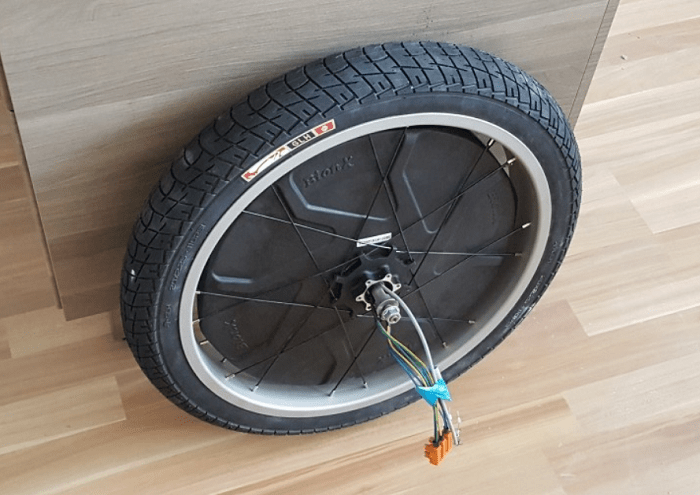Hummina Shadeeba
1 MW
I'm wondering if there's a hub motor design that utilizes the whole diameter of the bike wheel by putting the airgap diameter as close to the wheel diameter as possible. I think you could make the lightest and most powerful motor with such an approach and wondering why I never see it done. It would need many poles and teeth and winding/building the motor would be more work but otherwise ..why doesnt anyone make/sell such a hub motor?
no complexity, expense, and weight of the spokes.
i believe motors with many poles generally end up cheaper than with fewer poles as the magnets can be thinner and theyre the biggest expense.
doing a hallbach array and omitting all backiron would be worth doing and the rotating weight could be brought way down. ( a lot of magnets and more work but im willing)
i havent tried running emotor software in ages but tempted to get it going to see what the results would be and maybe get a stator or two cut and the other parts machined and build it. Surely someone has done this before. any links from the past?
maybe there's surprise hurdles such as getting a stator made that's so big...but could maybe build it out of segmented teeth all glued to an aluminum holder. maybe such a segmented tooth is already out there? or maybe with the very high erpm it would need to run a motor with so many teeth it would be worth doing a powder core...and that would be easy and cheaper to make. although my version would likely be low iron content.
like a washing machine stator:
https://www.appliancepartspros.com/whirlpool-stator-motor-36-wpw10419333-ap6021196.html?msclkid=01ffba0be8b51daeb1d7da54b1c04a47&utm_source=bing&utm_medium=cpc&utm_campaign=Campaign%20%2366%20-%20Bing%20Shopping%20(BSC)&utm_term=4577679226710413&utm_content=All%20Products
no complexity, expense, and weight of the spokes.
i believe motors with many poles generally end up cheaper than with fewer poles as the magnets can be thinner and theyre the biggest expense.
doing a hallbach array and omitting all backiron would be worth doing and the rotating weight could be brought way down. ( a lot of magnets and more work but im willing)
i havent tried running emotor software in ages but tempted to get it going to see what the results would be and maybe get a stator or two cut and the other parts machined and build it. Surely someone has done this before. any links from the past?
maybe there's surprise hurdles such as getting a stator made that's so big...but could maybe build it out of segmented teeth all glued to an aluminum holder. maybe such a segmented tooth is already out there? or maybe with the very high erpm it would need to run a motor with so many teeth it would be worth doing a powder core...and that would be easy and cheaper to make. although my version would likely be low iron content.
like a washing machine stator:
https://www.appliancepartspros.com/whirlpool-stator-motor-36-wpw10419333-ap6021196.html?msclkid=01ffba0be8b51daeb1d7da54b1c04a47&utm_source=bing&utm_medium=cpc&utm_campaign=Campaign%20%2366%20-%20Bing%20Shopping%20(BSC)&utm_term=4577679226710413&utm_content=All%20Products


